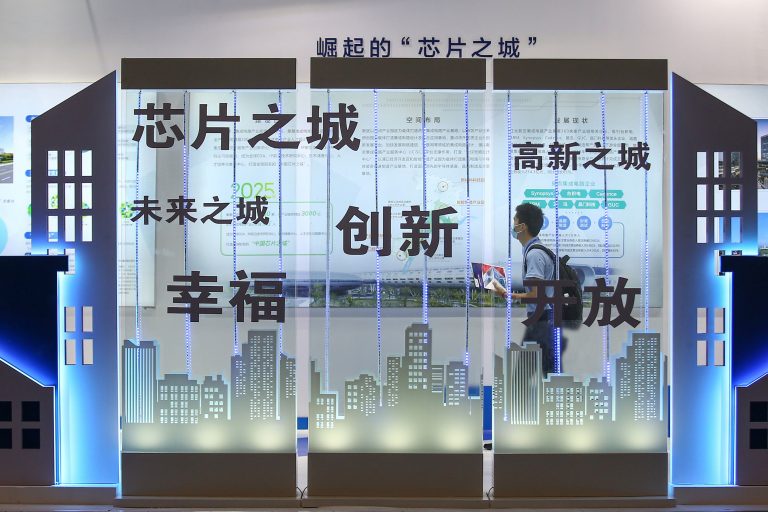By Shao Zi, Vision Times Staff
As China’s economy continues to deteriorate, the country’s young and middle-aged population is facing a wave of massive layoffs. Consequently, free downtown libraries are replacing Starbucks cafes as shelters for an increasing number of unemployed Chinese. Internet users joke that with the Chinese Communist Party ceasing to disclose the youth unemployment rate, the “library index” has become the most credible indicator for observing China’s unemployment rate.
In an article published by The Wall Street Journal in December 2023 titled “China’s Jobless Don’t Always Show Up in the Data. But They Show Up in the Library,” it was noted that following the lifting of communist “zero-COVID” policies, China’s economy has only continued to worsen, leading to the closure of many private companies and layoffs. Many office workers, fearing to disclose their unemployment status to their families, choose to hide in libraries pretending to go to work every day.
Online, there are also many videos shot by Chinese citizens showing libraries in major cities such as Shanghai and Shenzhen crowded with people during daytime. While there are indeed students studying for exams, there are more unemployed individuals glued to their phones. Both young and middle -aged people can be seen, although they do not interact with each other, they all tacitly understand each other’s situation.
- Deeper Into Deflation: China’s January Economic Data Shows Worsening ‘Balance Sheet Recession’
- Chinese Turn US Embassy Post Into ‘Wailing Wall’ for Stock Plunge
- 28,000 Silicon Valley Employees Lose Their Jobs Just One Month Into 2024
A Chinese netizen commented under one of the videos: “When Starbucks is crowded with unemployed people, at least it indicates they still have some money and can afford to buy a cup of coffee. But when public libraries are crowded with unemployed people, that’s a bigger issue. Several headhunter friends of mine have said that the situation is even more severe than these portrayals. Shanghai Library is packed every weekday, full of wandering unemployed individuals.”
China’s employment rate: a mystery unraveled
Success
You are now signed up for our newsletter
Success
Check your email to complete sign up
In July 2023, China’s youth unemployment rate soared to a staggering 21.3 percent, reaching a historic high. Subsequently, the Chinese Communist authorities ceased publishing the unemployment rate for youths aged 16 to 24 starting August, citing “optimization of statistical methods,” a move widely dubbed as a cover-up. Since then, China’s employment situation has remained a mystery. It wasn’t until Dec. 15, 2023, when China resumed disclosing the national urban unemployment rate for November, claiming it to be 5 percent, the lowest since December 2021. However, experts widely believe this statistic grossly underestimates the reality as it excludes rural populations and employs an unrealistic definition of unemployment — according to official criteria, individuals working “more than one hour per week” are not counted as unemployed.
Half a year after the cover-up, on Jan. 17 this year, official statistics were finally released again, revealing a youth unemployment rate of 14.9 percent for those aged 16 to 24, a significant decrease from the previous high of 21.3 percent last July. Officials explained that this time, the statistics primarily excluded 62 million students in school to convey a more accurate picture.
Liu Yuanchun, President of Shanghai University of Finance and Economics and an economist, pointed out: “Youth unemployment is not just a cyclical problem but a systemic and trend-oriented one.” He stated: “The youth unemployment problem may persist for the next 10 years, and in the short term, it will continue to worsen. If mishandled, it may trigger other social problems beyond the economic sphere and even become the catalyst for political issues.”
influx of job seekers turning to ride-hailing services
Young graduates face the anxiety of unemployment upon graduation, while middle-aged individuals face even more dire circumstances. They find themselves blocked by the “employment glass ceiling” once they hit 35 years old. Upon perusing Chinese job recruitment websites, one would find conditions almost universally stating: “Applicants must be under 35 years old,” leaving middle-aged job seekers with virtually nowhere to turn.
In such a predicament, the flexibility and low entry barriers of ride-hailing services (referred to as ‘web-based car-hailing’ in China) have become a fallback option for many unemployed individuals. According to reports from Hong Kong media, in China today, ‘If you can’t find a job, just drive for Didi’ is no longer a mere joke. Didi Chuxing, China’s largest ride-hailing platform, reports that from March 2021 to March 2023, the annual number of active drivers increased from 13 million to 19 million, marking a 43 percent increase.
However, due to economic downturns and consumer downgrading, the number of people using ride-hailing services has decreased. According to data from Didi Chuxing, from 2021 to 2023, the number of active users increased only from 380 million to 410 million, a growth of less than 10 percent, indicating an oversaturated market where driver income is nowhere near what it used to be. Drivers in Shanghai reported that whereas previously they could earn up to 1,800 yuan per day, now they can only make a maximum of 600 yuan per day, and even then they must drive for 18 consecutive hours just to earn that amount, often foregoing meals, sleep, and personal hygiene, with some drivers resorting to sleeping in their cars for up to 5 months to save money.
China’s economy faces short-term struggles to recover
Recent data compiled by Bloomberg from China’s online recruitment platform, “Zhaopin,” reveals a concerning trend for the final quarter of 2023. In 38 major cities across China, the average salary offered by companies to new employees has dropped by 1.3 percent compared to a year ago, reaching 10,420 Chinese yuan. This marks the third consecutive quarter of declining wages in China. Such figures underscore the heightened risk of inflationary pressures in 2024, with a bleak job market likely leading to reduced consumer spending, adding further strain to the rapidly deteriorating purchasing power over the three-year pandemic period.
Chinese economist Wang Jun expressed concerns, stating, “Currently, China’s economy is moving in the opposite direction compared to foreign economies, which is not a promising sign. Major global economic powers like Europe and the United States are experiencing inflation and are continuously raising interest rates. In contrast, China is reducing interest rates, indicating deflation. In plain terms, it signifies economic recession.”
With foreign investments withdrawing and factories closing, coupled with increasing job layoffs, China’s economy is poised to enter a vicious cycle of deflation. Wang Jun believes that China’s economy may struggle to regain its vitality in the next three, five, or even 10 years.














